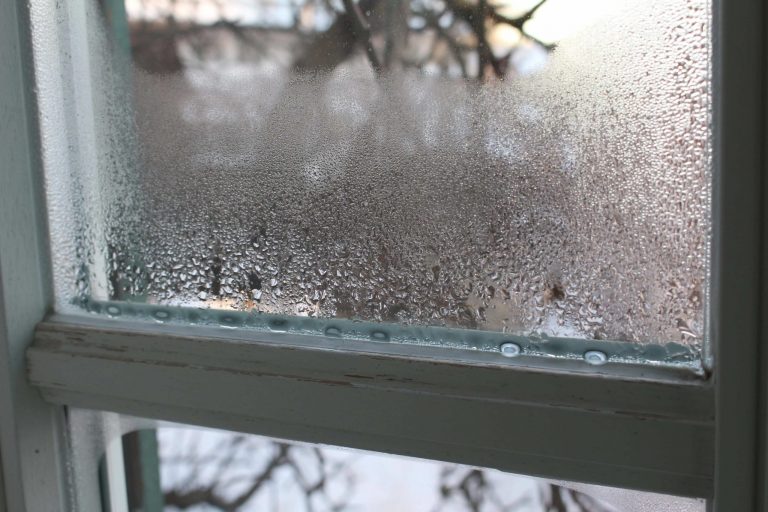As we all know, excess of anything is bad, be it food, money or much humidity in your home. Monitoring the humidity levels in your home is way more essential than you might be thinking. If the humidity levels are low, you might experience respiratory diseases and dryness in the air, and, for that, you can consider using a whole house humidifier in your house.
However, if the humidity levels are high or if you use your humidifier excessively, you are putting your house at risk by making it exposed to bacteria and molds. And that’s why it’s important to find the right humidity level in your home.
There are numerous ways to do it, the first being using a hygrometer, but don’t worry if you don’t have one. You will learn how to find the right humidity level in your home and that too without any hygrometer.
Use a hygrometer
Using an indoor hygrometer is the easiest way to find the humidity levels in any area. There are different types of hygrometers available, including electrical ones and manual ones too. You can opt for any of them, depending on your budget.
However, they do the same thing: that is, to find the humidity levels by measuring the water levels in the atmosphere. Depending on the type of hygrometer it is, its working might differ, so one shoe won’t fit all. Lastly, it’s way easier and less time-consuming to use a hygrometer as compared to other methods, so if you want to use it frequently, get one today.
Ice cube method
The ice cube method is one of the easiest methods to perform if you don’t have a hygrometer and want to find the humidity levels of your home. However, here is the catch: the ice cube method doesn’t provide a perfect numerical value but can let you know whether the humidity is low or high. Here are the steps you should follow to perform the ice cube method.
- Take a glass full of water at normal temperature. Further, you will also require some ice cubes; 5-6 would be sufficient.
- Put the ice cubes in the glass with water and place the glass in the room where you want to measure the humidity.
- Then wait for 10-15 minutes for the end results. When the wait is over, check for the glass.
- If the glass has condensations on the outside, the humidity levels of your home are high.
- On the contrary, if the glass has no condensation outside, the humidity level is low.
Wet and dry bulb test
The wet and dry bulb test works as a DIY hygrometer that provides accurate results. All you need for this method is a pair of thermometers, a cotton ball, some water, and a fan. Here are the simple steps you should follow for the wet and dry bulb test.
- Dip the cotton ball into the water and make it damp.
- Then take one of those two thermometers and wrap the damp cotton ball around its tip; it’s called the wet-bulb, while the other one is called the dry bulb. Use a rubber band to secure it.
- Further, place both sides of the thermometer by the side, and you can use a fan for speedy results.
- After some time, check both of the thermometers and record their temperatures.
- Subtract the wet bulb temperature from that of the dry bulb. Lastly, compare the value with a relative humidity chart which is easy to find online.
How to increase indoor humidity?
- Use a humidifier- using a humidifier is the best way to increase your home’s indoor humidity levels. They are available in different sizes, so depending on your room size, you can get one.
- Buy house plants- as everyone has heard that house plants absorb moisture. However, it’s not totally true; they also release some moisture. So get some of those lovely house plants as decor on the countertops.
- Spray water- if you are not in the mood to get a humidifier or plants in your house, the least you can do to increase humidity is to spray water in your house using a spray bottle.
How to decrease indoor humidity?
- Use exhaust fans- installing exhaust fans in your kitchen or any room will keep it dry. Also, your room will have good ventilation due to exhaust fans.
- Use a dehumidifier- contrasting to a humidifier; the dehumidifier absorbs excess moisture from the air. So you can get one depending on your room size and preferences.
- Get house plants- house plants absorb humidity from their surrounding area, and they totally love it. So you can install houseplants in your house to decrease indoor humidity.
Conclusion
Humidity is one of the most neglected yet important parts of housekeeping. It decides the growth of bacteria, molds, and smells in your house. Plus, having the right humidity level in your home is essential for better health rather than having air conditioners on all the time. So we hope that now you know how to find the right humidity level in your home. Also, try those basic ways to maintain the right humidity levels for a better home.

